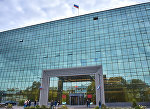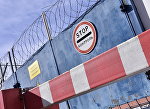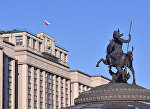MOSCOW, February 28 (RAPSI, Ingrid Burke) – In a US case that has sparked a considerable debate on the rights and limitations of patriotism, a California state court held Thursday that a high school acted appropriately in asking a group of students not to wear apparel featuring depictions of the American flag during the Mexican holiday of Cinco de Mayo.
Cinco de Mayo, which translates literally to the “fifth of May,” is a holiday commemorating Mexico’s triumph against France in the Battle of Puebla on that day in 1862.
An altercation occurred on the campus of Live Oak High School in Northern California during its celebration of Cinco de Mayo 2009 after a group of students hung a makeshift American flag from a tree, which evoked chants of “USA” from a crowd of nearby students.
A student accompanying a second group of students that had been walking nearby with a Mexican flag began chanting a slogan steeped in profane and racially-charged terms. When Assistant Principal Miguel Rodriguez asked the student to stop shouting obscenities, the student retorted that the first group was being racist.
On Cinco de Mayo 2010, a group of students wore shirts depicting American flags. According to the court decision, this cause a number of students to confront Rodriguez, both with news that an altercation may soon emerge, and with questions regarding why the students wearing the shirts “get to wear their flag out when we [sic] don’t get to wear our [sic] flag?”
Upon the instruction of Principal Nick Boden, Rodriguez asked the students either to turn their shirts inside out or remove them.
The students refused, one of them stating that he was willing to accept the responsibility that his attire may place him at risk of violence.
Of the students, two whose shirts Boden deemed to display less “prominent” imagery were allowed to return to class.
Two others whose shirts were deemed more likely to provoke a reaction were given the option of turning their shirts inside out, or going home for the day with excused absences. They opted for the latter, and faced no disciplinary repercussions.
The students received various threats, including one claiming that members of a San Jose gang would come to town to “take care of” the students. As a result of these threats, the students stayed home from school on May 7.
Three of the students and their parents then sued the school district, Boden, and Rodriguez, alleging violations of their rights to freedom of expression under the US and Californian constitutions, as well as their rights to equal protection and due process under the US constitution.
At the District Court level, the court granted summary judgment against the students, finding that the school had not violated the students’ rights as guaranteed by the state or federal constitutions.
The students then appealed to the US Court of Appeals for the Ninth Circuit.
Describing the balance to be struck in the case, Judge M. Margaret McKeown stated, “We are asked again to consider the delicate relationship between students’ First Amendment rights and the operational and safety needs of schools.”
The First Amendment to the US constitution protects the freedoms of religion, speech, the press, and assembly, as well as the right to petition the government.
The Ninth Circuit Court found that the students’ rights had not been violated, stating: “Here, both the specific events of May 5, 2010, and the pattern of which those events were a part made it reasonable for school officials to proceed as though the threat of a potentially violent disturbance was real.”
The students had also asserted that their equal protection rights were violated, in contravention of the 14th Amendment to the US constitution. They alleged that other students had been permitted to wear the colors of the Mexican flag without issue, and asserted as such that they were treated differently than other students because of their unpopular viewpoint.
The court rejected the claim, finding: “Because the record demonstrates that the students’ shirts ‘might reasonably have led school authorities to forecast substantial disruption of or material interference with school activities’ … the authorities’ actions were permissible under [the relevant case law].”
The students further sought to enjoin the use of the school district’s dress code, which prohibits students from wearing clothing that “indicate[s] gang affiliation, create[s] a safety hazard, or disrupt[s] school activities.” The students claimed that it failed to provide objective standards for assessing students’ attire.
Affirming the district court’s finding that the dress code is not unconstitutionally vague, the Ninth Circuit Court found: “It would be unreasonable to require a dress code to anticipate every scenario that might pose a safety risk to students or that might substantially disrupt school activities.”



